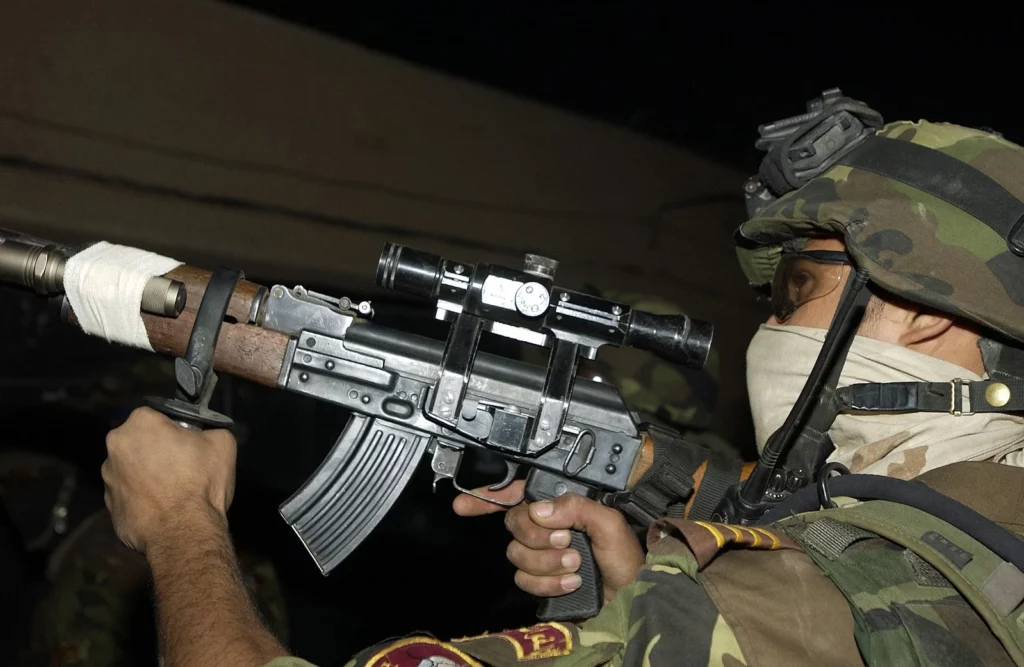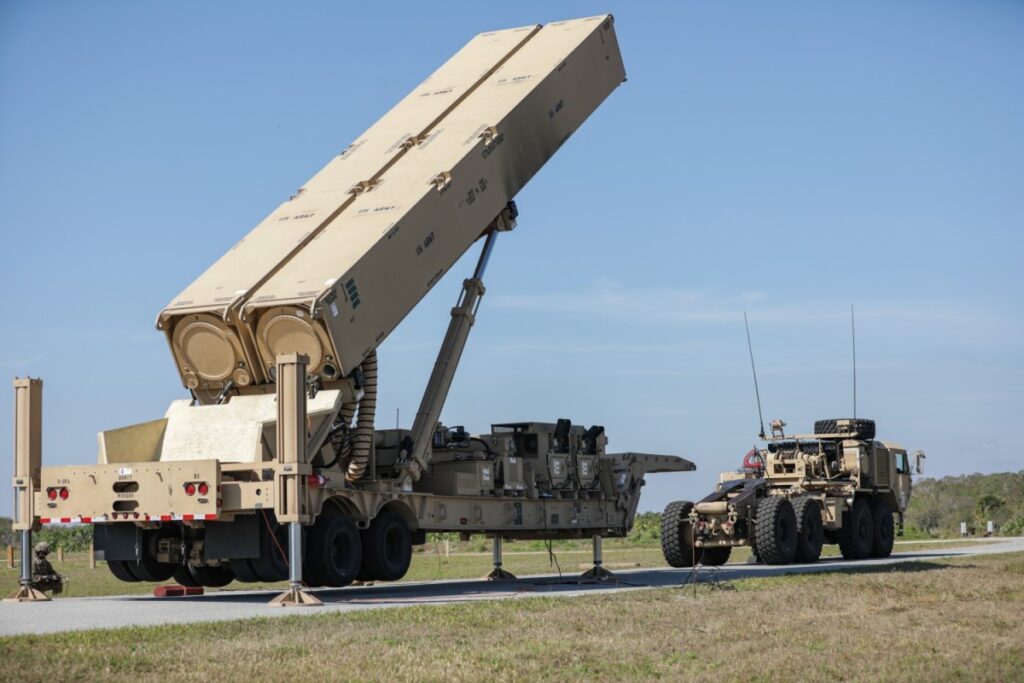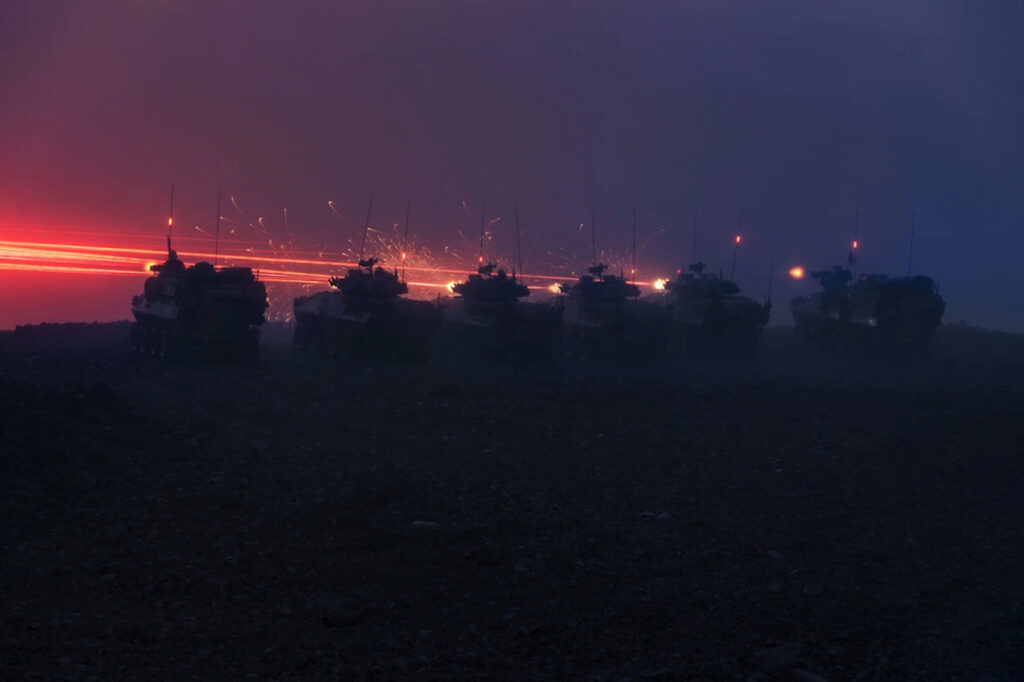The use and production of the AK series of rifles has spread across the world and everyone knows an AK when they see it. Iraq famously bought and built its own AKs, and one interesting variant of the Iraq rifle was something called the Tabuk which had a history tied directly to Saddam Hussein. The Tabuk served as a designated marksman’s rifle.
When Saddam came to power, he did what every other murderous dictator would and went to war. But first, he wanted a big army, and his army needed guns. The Soviets weren’t a fan of Saddam and weren’t thrilled to arm a Middle Eastern strongman claiming to be a socialist. So, Saddam contacted Yugoslavia. Yugoslavia and the Soviet Union were allies on paper, but their relationship was strained.
More than guns
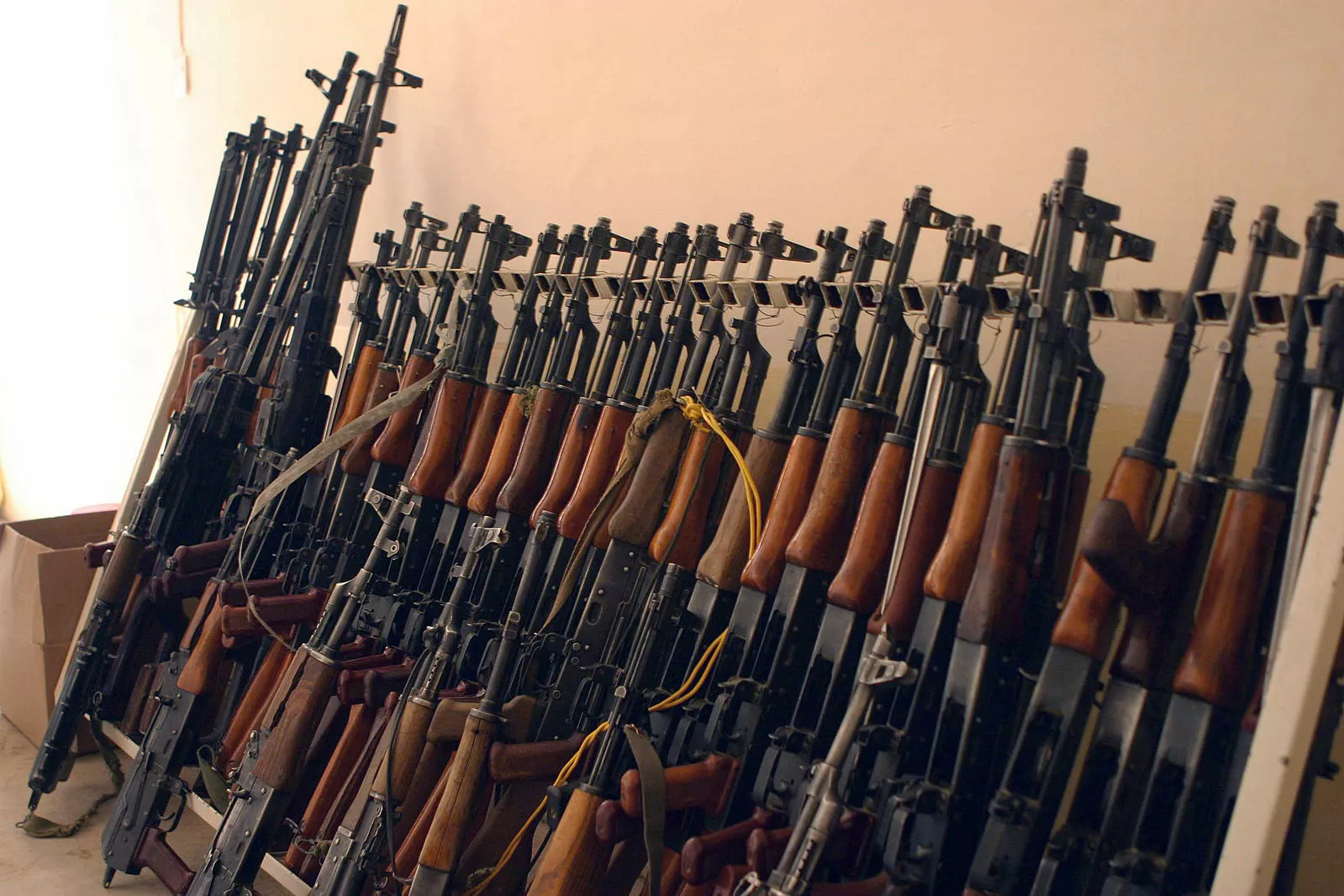
Yugoslavia didn’t only sell AK rifles to Iraq, but also the machinery to produce them.
Yugoslavia is famous for its Zastava-produced AKs. Since they took a long route to make their own AKs, these rifles tended to be a bit different. Russian AKs featured a 1 mm thick receiver, and their RPKs featured a heavier-duty 1.5mm receiver.
However, Yugoslavia decided to make its receivers’ thickness a set 1.5 mm between AKs carbines and machine guns. They also used the thicked RPK trunnions for their rifles. This increased the rifle’s weight considerably but improved its durability and, arguably, accuracy. It’s hard to break an AK, it’s almost impossible to break a Yugo AK.
The Iraqis armed themselves with Yugo M70 AK rifles and M72 RPK machine guns. With the manufacturing machinery in hand, they began to produce their own AK rifles, and they cloned the Yugoslavian models to a T and somewhere in between the rifle and machine gun sits the Tabuk model.
Related: The Bailey Machine Gun pioneered belt-fed gun designs 150 years ago
The Tabuk name and origins

When you say Tabuk in the United States around gun nerds, they’ll likely picture the DMR version I’m writing about today. However, to be completely clear, all Iraqi-made AK variants are called Tabuks which means battle in ancient Arab. Somehow, in the West, the name has become solely associated with the DMR variant of the rifle.
The Tabuk rifle started life as the M72 RPK-type machine gun. The RPK-style guns feature a 21-inch barrel, iron sights, and often a bipod. The Tabuk was similar but had a much lighter and slightly longer 23.6-inch barrel. An RPK-style weapon has a thicker barrel to deal with the heat that is produced when the weapon is used for suppressing fire, but in a DMR, this is not necessary.
In fact, the Tabuk rifle is a semi-auto-only rifle and has no provision for full-auto fire, which could burn the barrel up rather quickly. The rifle’s thinner barrel also saves weight, as does the weight reduction in the stock in the form of a large gap and the removal of the M72 bipods. The total weight of a Tabuk is about 10 pounds, and the M72 RPK weighs a little over 12 pounds.
The cut in the stock gives the weapon a bit of a Dragunov or PSL appearance and makes it easy to attach a raised cheek rest to better use the attached optic. The Tabuk also features a rifle scope, often a 4X PSO-style optic. Optics on these guns are attached to the receiver via a side mount and often sit quite high.
Related: Brazil’s evolved IA2 – Service rifles from around the world
Practical accuracy
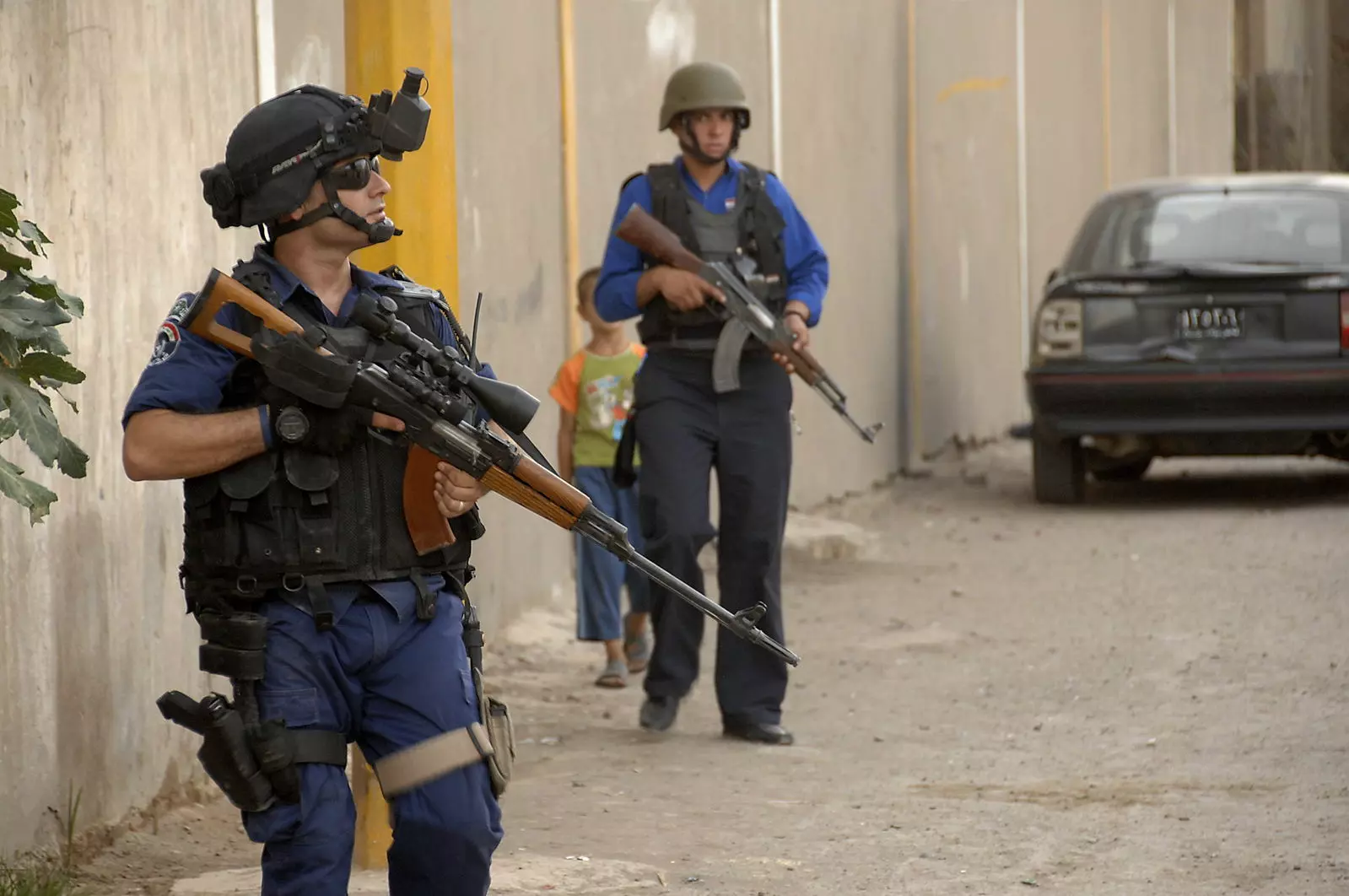
The Tabuk is no sniper rifle. It’s somewhat limited by its use of the intermediate 7.62x39mm cartridge. The range of this cartridge is designed to be around 300 meters but after 200 meters, it starts dropping rapidly. Nevertheless, the longer barrel does add some velocity to the round and does help improve its effective range.
Rather, the Tabuk is designed to give an infantry squad or police unit more precision within the standard infantry engagement. A Tabuk-armed soldier with an infantry squad could hit a smaller threat behind cover in the midst of a firefight: hitting a threat at 100 yards with a 4X scope that’s a foot wide is child’s play.
The Tabuk DMR hasn’t been issued much outside of Iraq. Some have found their way into Syria, but they aren’t common. The Tabuk has been from Saddam’s army to the modern Iraqi army and even by ISIS fighters, still, it remains somewhat rare in the AK world.
Feature Image: An Iraqi Army soldier assigned to 3rd Battalion, 2nd Brigade, 6th Division, readies his 7.62 mm Tabuk assault rifle while conducting a raid in Sadr City, Baghdad, Iraq, in September 2005, during the Iraq War. (Specialist An Iraqi Army soldier assigned to 3rd Battalion, 2nd Brigade, 6th Division, readies his 7.62 mm Tabuk assault rifle while conducting a raid in Sadr City, Baghdad, Iraq, in September 2005, during the Iraq War. (Specialist Gul A. Alisan, United States Army), United States Army)
Read more from Sandboxx
- Report finds inadequate medical oversight led to 2022 SEAL candidate’s death
- Still in Saigon: How a Vietnam War song can speak to all veterans
- These are 7 finer things that military video games get wrong about combat
- The Marines want to make their secret beach-swarming drones autonomous
- The bravery of a Marine guerrilla in World War II
